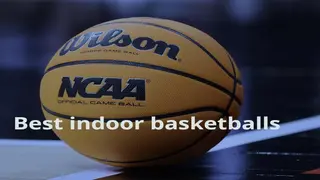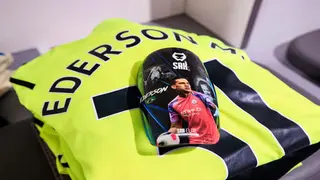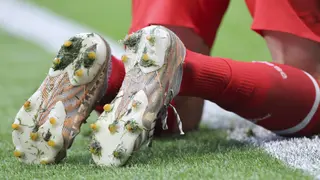Ranked! Top 10 best indoor basketballs to hoop with right now
NBA
Cricket requires crucial equipment and gear to play and be safe while doing so. If you want to improve your cricket skills, this helpful guide will show you what to look for in cricket gear and what to buy so you can train with confidence.

Cricket is potentially hazardous if players do not use the proper protective gear. Batsmen, whether they are professionals taking against fast bowlers who can reach 80 mph or amateurs just getting their feet wet, need a few crucial pieces of sports gear.
Playing hardball cricket requires a plethora of protective gear. Hitting gloves, a helmet, hitting pads, and a bat are all necessities. Players must keep themselves safe while playing the sport. Read on as we explain the cricket equipment names and what they do.

A cricketer's bat is the most critical item of gear. The gamer should set a budget before analyzing bats that fall within that range; this will help them select a good bat.
Ranked! Top 10 best indoor basketballs to hoop with right now
NBA
Bats with a medium to low sweet spot and bats with a medium to high sweet spot are available to players. The choice of the bat and ball is really up to the player's style of play.
Playing with a good pair of gloves will protect your hands from harm. The primary function of gloves is to protect the fingers, palms, and wrist from the force of a hit. Choose a pair of gloves that fits you well and has additional padding.
There is a distinct pair of gloves designed for the wicketkeeper position. It would be best to try to find gloves with plenty of padding, flexibility, and a good grip.
Protect your legs from harm with a high-quality set of pads. Searching for batting pads that fit snugly and provide sufficient protection would be best.
The wicketkeeper must have suitable leg pads to move freely behind the wickets. For wicketkeepers, it is an essential component of the gear. Comfort and convenience of usage should be your top priorities.
A list of the best basketball referee shoes in the market right now
NBA

Batsmen and wicketkeepers alike must wear protective headgear. A helmet's shock-absorbing properties should make it safer to wear on the head. In addition to being sturdy, the helmet should fit snugly, be stable, and be as light as possible. It should be breathable and comfortable to wear and absorb sweat well.
Comfort and grip should be your top priorities when shopping for cricket shoes. Shoes with spiked soles are great for slick surfaces, but those with bumpy rubber outsoles are more suited to rugged terrain. Another thing to look for is a mix of pimples and spikes.
Shoes with rubber treads on the heels and front solid spikes for traction are ideal for batters. Fast bowlers usually choose shoes with both front and rear spikes and provide enough ankle support.
A cricket uniform is necessary, as is the case with any sport. Every player needs a white sports shirt. A top-notch shirt should have a snug fit, a pleasant feel, excellent moisture management, and excellent mobility.
Soccer equipment list: Essentials a footballer needs to have
Football
Players may wear shirts with partial or complete sleeves based on the season they would be playing in. Additionally, players should wear sports sweaters in freezing weather.
Pants made of white cricket fabric are as essential as white shirts for playing the sport. The ideal sports pants are loose-fitting, comfy, and give the player plenty of mobility. Proficiency in managing moisture is also necessary.

An abdominal guard also called a box or L-guard for wicketkeepers and batters. It is another essential sports safety gear that protects the privates from harm.
Try using grip tape to make your bat handle more comfortable to hold. Keep an eye out for traction-enhancing grip tape that lasts a long time.
Using bat oil regularly will help keep your bat healthy. If you use it frequently, you can keep your bat from becoming dry and cracked.
Which are the best socks for tennis and why are they the best?
Tennis
Players must always have a good pair of sunglasses on hand. In addition to protecting your eyes from harmful UV rays, these eyeglasses improve your vision, aid in navigating the game, and may even prevent facial injuries caused by impacts. Wicketkeepers also use them to shield their eyes from flying bails that can hit them between their helmet's grill and peak.

Every player needs a high-quality cricket bag to keep their cricket organised. A high-quality cricket bag will have separate sections for the necessities above.
The cricket bag must be both durable and not too heavy. They have a variety of bags to choose from, including wheelie bags, duffel bags, and hybrids of the two.
The laws of cricket govern the sport and place stringent regulations on all equipment needed for a game. The following are questions mostly asked about cricket equipment and its functionalities.
A list of the best looking soccer cleats ever made: which is your favourite?
Football
A batting helmet, gloves, and pads are must-haves. Our recommendation is to use a box as well. To keep yourself safe, read on as we detail the needed gear. Of all things, a bat is the most basic requirement.

An oval field with a rectangular pitch measuring 22 yards (20.12 meters) by 10 feet (3.04 metres) wide is used for the sport. At the far ends of the field, you will find two sets of three sticks, or wickets, embedded in the earth. Horizontal bail pieces span the top of each wicket.
The most crucial tools used in cricket are still fashioned from pre-industrial, natural materials. Cork, twine, and leather come together to form the bat. Bat and balls are still created by hand, not in a factory.
Which are the best soccer cleats for wide feet? Find out here
Football
An axe. A stick or willow is another name for a bat. Bats used in the sport have a long and storied history, with some dating back to 1729.
Players need a good gear set to play cricket well and have fun. They must gather all their cricket equipment, including bats and boots, to perform at their highest level.
READ ALSO: Domantas Sabonis' wingspan, stats, net worth, wife, height, father
Sports Brief published an article on Lithuanian basketballer Domantas Sabonis. He plays for the Sacramento Kings in the NBA.
Domantas' father, Arvydas Sabonis, is a former three-time All-Star and a Hall of Famer. Dive into his personal and professional life by clicking on the link above.